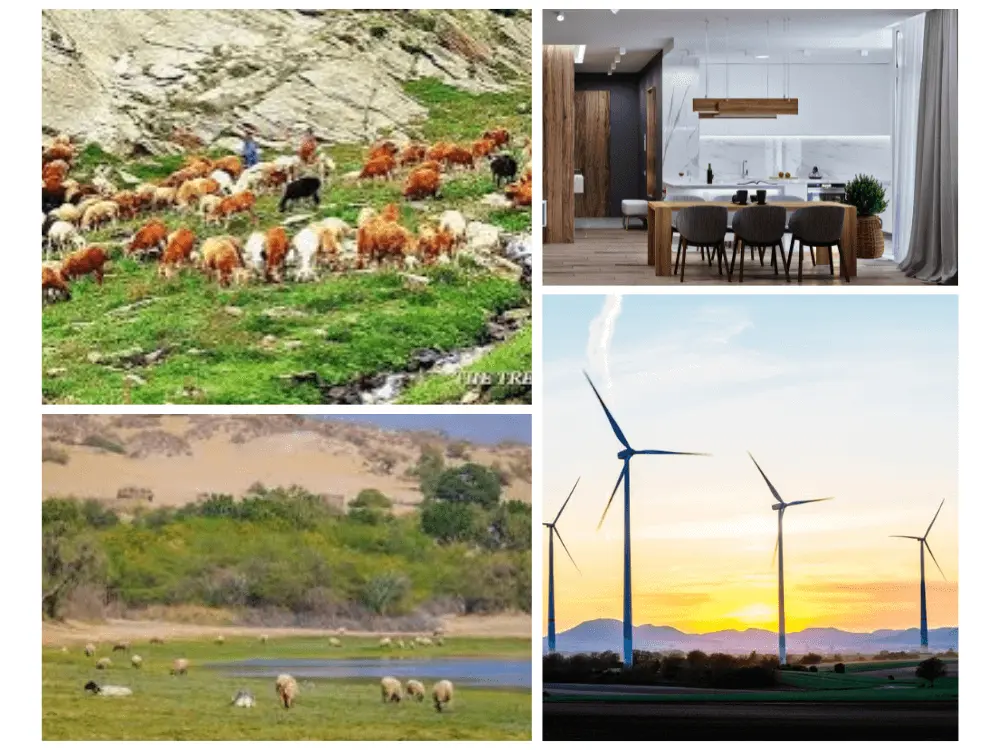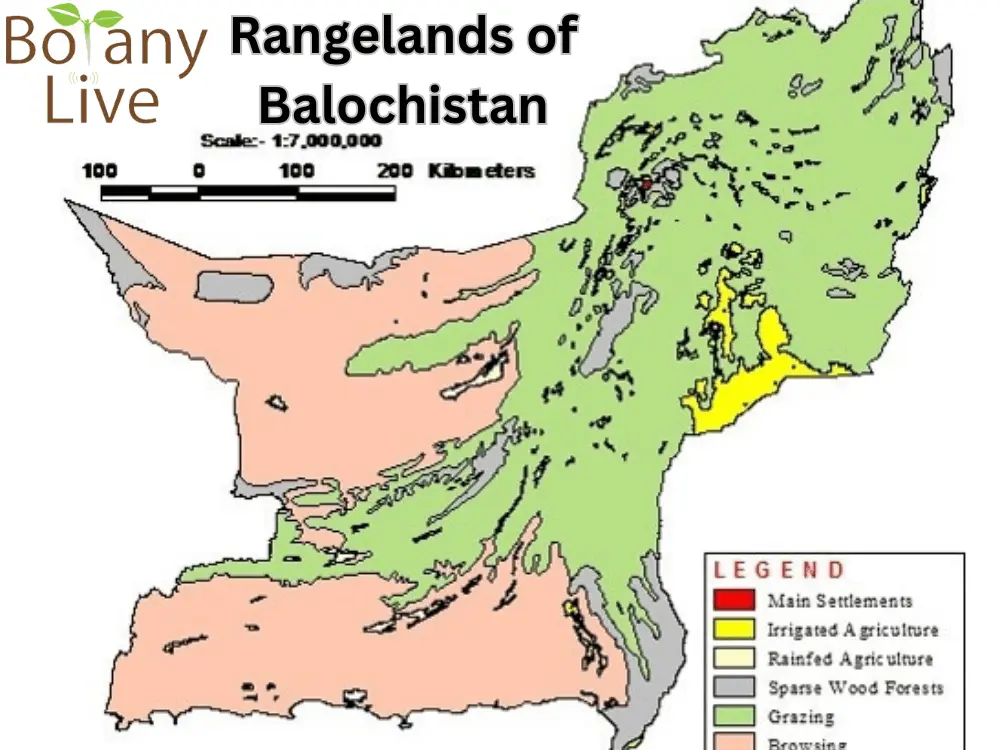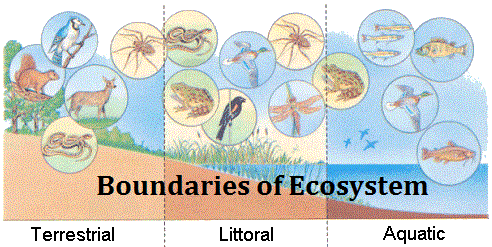Rangeland Management | Rangeland, Importance and Limitation
Rangeland Management
Rangeland is wasteland, usually arid or semi-arid with low or erratic rainfall. The land is mainly used for forage and feeding of the livestock, keeping livestock, storing water, recreation, and much more. Rangeland Management is necessary to save this high value natural resources.
Locally, rangeland is called “Chiragah” in Pakistan which may be considered as wasteland and synonymous with desert and arid-land.
“Uncultivated areas that support natural or seeded herbaceous or shrubby vegetation with or without trees”.
(National Committee on range management,1973)
“An area with low or erratic precipitation, rough topography, extreme temperature or poor drainage are unsuitable for cultivation and are source of forage for native and domestic animals, as well as sources of wood products, water and wildlife”. (Stoddart et al.,1975).
What is the importance of Rangelands?
Following list shows the importance of rangelands for animals, human, and for the ecosystem.

Rangeland Management
Rangeland management implies application of ecological principles for sustainable development and management of these natural resources.
“Rangeland management is an art and science of optimizing the return from range lands through the manipulation of range ecosystem”.
(Stoddart et al.,1975)
“Rangeland management as the art and science of planning and directing range use to obtain maximum animal production consistent with other natural resources”.
(American Society for Range Management1964)
Major land uses in Pakistan are;
Total area of Pakistan is about 79 million hectare (m ha)
Cultivated area is 21 m ha.
Barani area is about 5 m ha (24%)
Irrigated area is 16 m ha (76%).
About 60% of the total area of the country (48 m ha) is rangelands that support almost 93.5 million heads of livestock.
Forestry is the major land use in Northern Pakistan. In Pakistan, forests cover about 4.5 percent of the country producing only 0.3 million cubic meters of timber and 0.4 million cubic meter of firewood while the demand is about 1.9 million cubic meter.
Balochistan covers about 40 percent of the area of Pakistan, It primarily depends upon livestock production from its vast rangelands. In Balochistan, 90% of the required livestock feed is provided by rangelands (FAO. 1983).

In Punjab and Sindh, livestock is an important source of income in arid and barani areas.
Limitations and Factors of Rangeland Management
Following factors are considered as the limitations in the development of rangelands in Pakistan. These factors are;
- Number versus quality of livestock: In tribal areas, status of a man in usually judged by the size of the herd he owns. This practice has lead to the retention of low quality, unproductive and uneconomical animals
- Migratory Herds: In western regions of the country, migratory herds and seasonal influx from nearby areas of Afghanistan are the sources of problem. It increase grazing pressure on already heavily grazed rangelands.
- Land Tenure System: Mostly, rangelands are common tribal and village property and everyone in the tribe/village is free for unrestricted grazing of rangelands. Without conservation practices, rangelands are ruined.
- Arid Climate: Most of part Pakistan lies in arid to semi arid zone of climate where low precipitation, extreme high temperature and low humidity prevails. These hostile climatic conditions are very horrific for plant life. Forage capacity of rangelands in these areas fluctuates greatly.
- Lack of organization: Absence of a well organized and functional organization to manage rangelands in Pakistan is also a constraint. An organization with authority, accountability and responsible staff should be to manage and restore rangelands.
- Lack of awareness: Lack of awareness, encouragement and appreciation from senior administration discourage young and talented persons who are enthusiastic to work on rangeland management issues. This situation may push young blood to leave the country for other opportunities.
- Low Budget: Funds are available and allocated for range management and development every year but range land is so vast and amount of funds in relation to the area is much less.
- Lack of research: Rangeland management and development research need proper support and involvement. Lack of interests and adequate resources to execute analysis and surveys may result in destruction of these natural rangeland resources.
- Difficult working conditions: Difficult and unfavourable working condition with low budget and incentives discourage members of forest department.
- Less priority: Less priority at the hands of planning and development authorities of forest department is also a hurdle in the development. Rangelands provide indirect returns so it is difficult to measure their vales and thus given less importance.
- Lack of interest: Forest department deals with the range management activities so development and management of rangelands is getting secondary importance. Both range management and forest management (forest fire) are difficult tasks as both cover vast land area.
Range Policy in Pakistan
In Pakistan, there is a national policy concerning rangeland management on scientific basis since independence.
In 1964, CENTO range teams recommended formulation of range policy for Pakistan.
In decision making process, livestock producers were involved and a grazing advisory committee was created to work on provincial and district level.
National Rangeland Management Committee outlined the following guidelines and also stressed the urgency of immediate implementation.
All public rangelands in Pakistan are under Provencal Forest Department.
Cholistan Development Authority (Punjab)
Arid Zone Development Authority (Sindh)
The Inspector General of Forests in Ministry of food, agriculture and cooperatives looks after the affairs of range management at federal level.
The National commission on Agriculture (1988) recommended the urgency to establish Watershed and Aridland Development Authority (WALDA) under ministry of Food and Agriculture
What is Watershed and Aridland Development Authority (WALDA)?
The authority will perform in coordination with federal and provincial agencies to execute the following proposed tasks. The aim of creating this Authority is;
- To formulate a long range policy conserving water and forest resources of Pakistan
- To promote research activities in cooperation with federal and provincial agencies for the development and rangeland management.
- To coordinate and support all federal and provincial agencies.
Range Research and Education in Pakistan
In Pakistan, range research and education should be in the following fields;
- Forage germplasm evaluation
- Range plant-soil-water relationship
- Forage quality and range animal nutrition
- Range resource inventory
- Development of silage, urea molasses etc as supplementary feeds
- Selection of drought and salt tolerance species.
- Selection of forages for winter feeding.
- Economic evaluation of livestock ranching
- Range improvement studies e.g. reseeding, fertilization, water harvesting etc.
I’m Dr Qaiser Maqsood (PhD), a dedicated researcher and expert in Biological Sciences, Gardening, Bio-Diversity, Ecology, and Environmental Sciences. I’m much concerned about Environmental Pollution, Climate Change, Plantation, Gardening, and Global Warming. My passion is to explore innovative solutions in all these fields.
Be aware that we have ONLY ONE EARTH. Protect it!!






